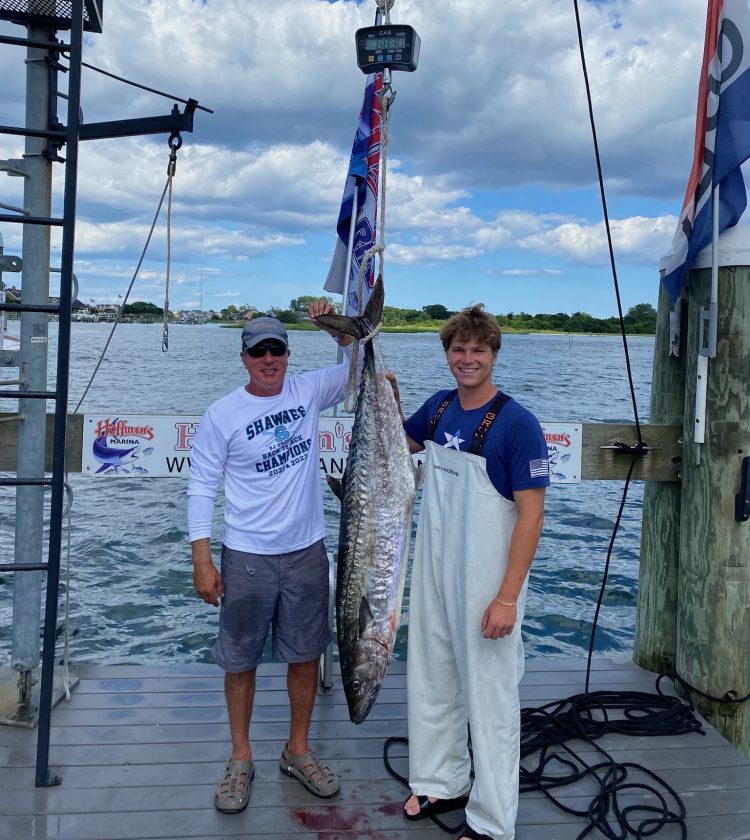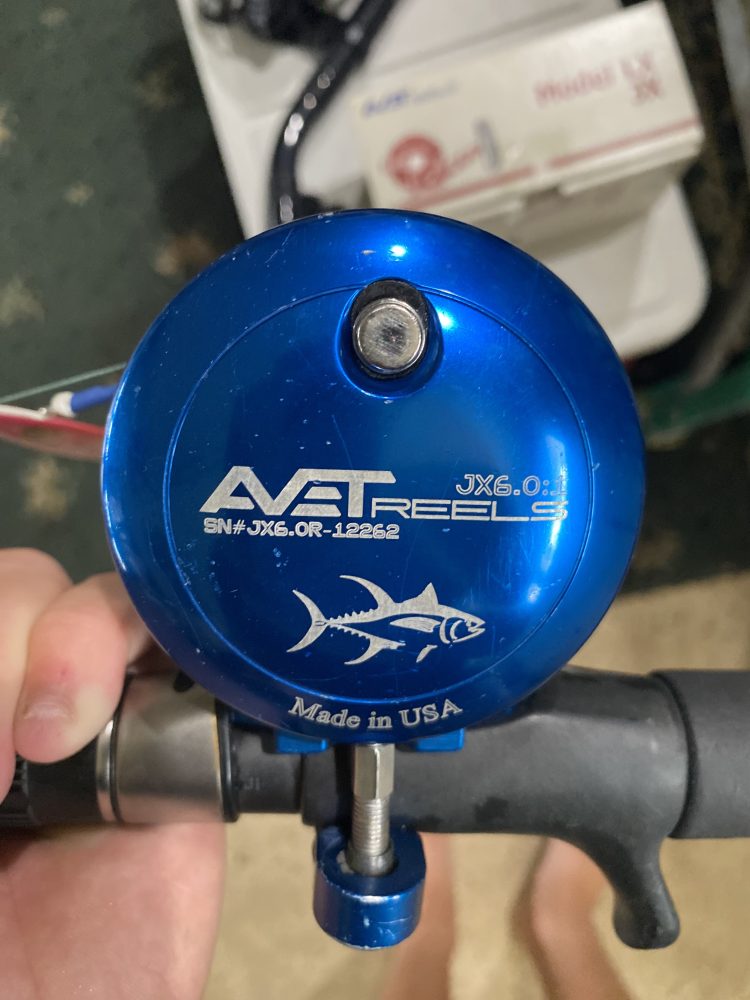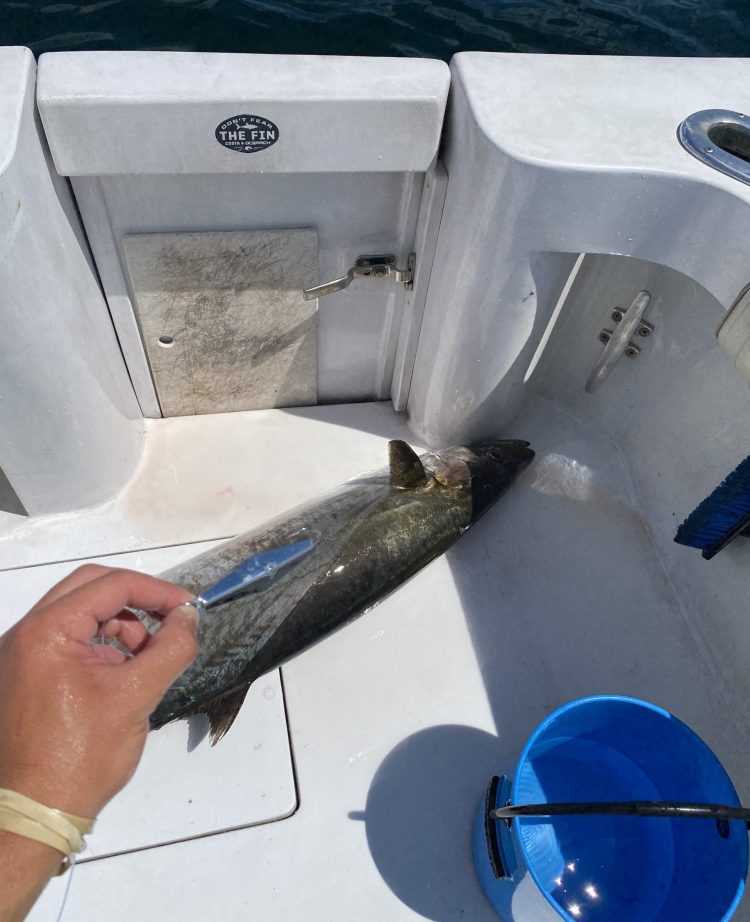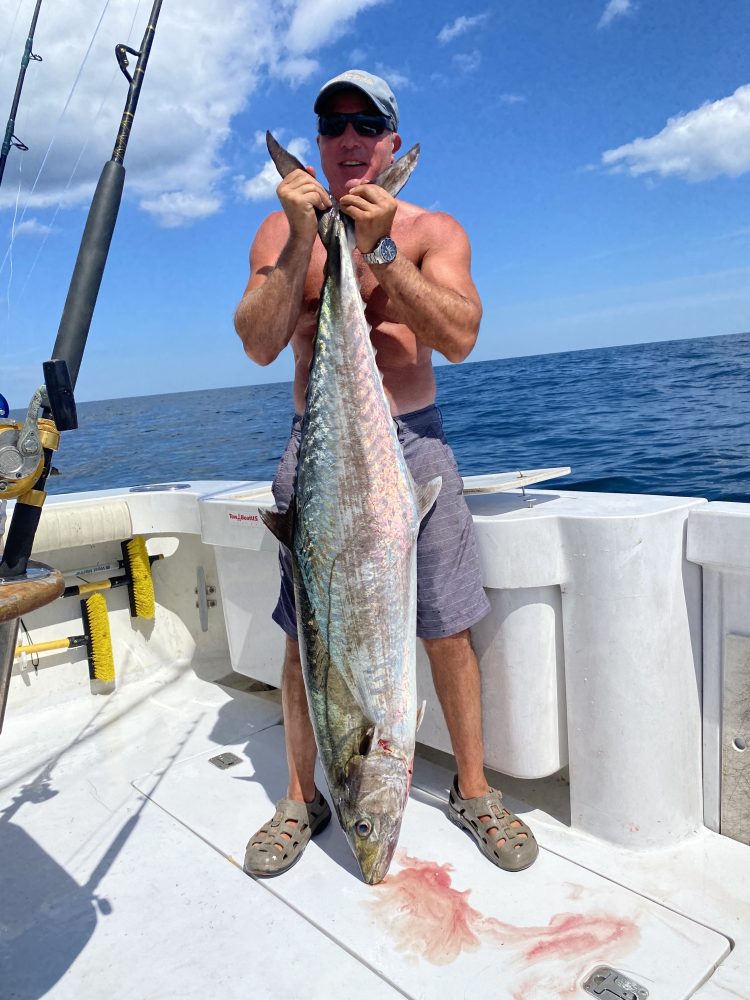New Jersey’s Pending State-Record King Mackerel
A late start and engine troubles lead a father/son duo to land a potential state-record king mackerel.

On Sunday, July 30th, the father/son duo of Dominic and Joseph Vricella hooked what will likely become a new state-record king mackerel just 5 miles off the coast of New Jersey. As with many state records, the most miraculous part of their tale lies within the details of the catch.
The two regularly run their boat—a 36-foot Luhrs named Crime Scene—out of Manasquan, New Jersey for tuna, but on this trip, their plans went awry from the get-go. Dominic and Joseph missed the early start after a late cancellation from a friend, which set them back to a 9:30 a.m. push-off from the dock. Their plan was to head 8 miles offshore to their numbers from a trip two days prior, where bluefin tuna were gorging on squid, and they had unfortunately gone 0 for 1 on a giant.
After catching an ample supply of bait, they reached the fleet and set up to make a long drift to start the day. But when they fired up the engines again to reset, Joseph noticed the temperatures skyrocketing from 180 to over 220 degrees. Concerned, but not about to miss out on a potential redemption tuna, they puttered back through the fleet at 5 knots, set out baits, and began working on the engine. They soon realized the impeller—a rubber component crucial to maintaining engine temperature—was shredded, and that they had no choice but to head for port on one engine.
To avoid further damage, Dominic cruised at around 6 or 7 knots while Joseph set out two spreader bars to try and turn the day around. And with the recent showings of Spanish mackerel around Axel Carlson reef, Joe set out two Clarkspoons along with the spreader bars.
The Clarkspoons were trolled on two Avet JXs that were each spooled with 450 yards of 50-pound-test Daiwa J-Braid, which was tied to a lengthy 60-pound-test fluorocarbon leader. Attached to the 60-pound fluorocarbon was a drail weight, with a length of 30-pound Seaguar fluorocarbon tied between the drail weight and the Clarkspoon to maintain the target depth. With about 5 1/2 miles remaining on their slow haul home, Joseph heard the rubber band snap on one of the Avets and line began pouring off the reel.

Joseph, who jokingly claimed his father was sore about missing their shot at tuna two days prior, decided to let Dad reel in this contender. With minimal line left on the spool, Dominic requested the belt to regain some ground on the fish. Then, after putting some line back on, the fish dumped another 1/4 of the spool.
Unsure of what they were battling, Dominic gradually dialed up the drag resistance enough to turn the fish’s head. After 7 minutes of tug-of-war, he got the fish boat side. Dominic thought they had landed a wahoo, but when Joseph caught a glimpse of the fish, he knew it was a giant king mackerel. In awe of its size, he instinctively reached for the gaff and stuck it without hesitation.
While their smaller relatives, Spanish mackerel, are regular late-summer visitors to the mid-Atlantic, king mackerel tend to be less common. According to NOAA, their northern range extends to the south coast of Massacusetts, where juvenile king mackerel are hooked among schools of Spanish macks during the late summer and early fall, when water temperatures peak.
“The Clarkspoon was hooked perfectly in the corner of its mouth with the fish’s teeth clamped on the jig,” Joseph told me. Considering their 30-pound Seaguar fluorocarbon was intended for Spanish mackerel, this toothy giant could have easily cut them off with one well-timed head shake.

As they headed within cell phone range, Joseph frantically called friends and used his phone to research the previous state-record king mackerel in New Jersey. According to New Jersey Fish & Wildlife records, the current state record was caught by Fernando Alfaiate off of Cape May in 1998. That fish weighed 54 pounds on the dot.
With only their eyeballs to judge their catch until shore, Dominic and Joseph estimated the king mackerel to be anywhere from 30 to 60 pounds. Upon reaching Hoffman’s Marina in Brielle, where there is an IGFA-certified scale, their catch weighed-in at a whopping 67.45 pounds and measured 61.5-inches long with a girth of 31 inches, besting the previous record by nearly 14 pounds.

Astonished with how the stars aligned on a potentially disastrous trip, Dominic and Joseph rejoiced after getting their redemption for a lost tuna. They submitted all the necessary documentation of the catch to the state, and are currently awaiting a representative to visit The Reel Seat in Brielle and certify their trophy catch.
One week later, their impeller is fixed, their engines are running, and the father/son team is back offshore where they stuck a 54-inch bluefin over the weekend.
Leave a Reply